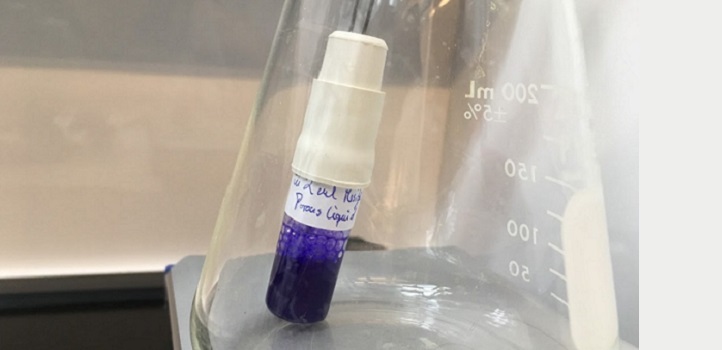Chemical Engineering
Space invaders as MOFs act as liquids
Modified metal-organic frameworks that can behave as porous liquids offer new possibilities for gas separation technologies.

Innovative materials called metal-organic frameworks (MOFs) could become much more versatile following research that shows that they can be manipulated as liquids.
MOFs are highly porous crystalline solids with metal ions or metal clusters joined by organic (carbon-based) linker groups. Varying these parts can create a huge variety of solids with internal pores able to trap selected molecules or catalyze chemical reactions.
“These crystalline materials are difficult to process, but we have developed a way to solubilize them,” says Anastasiya Bavykina of the research team at the KAUST Catalysis Center.
The KAUST researchers produced membranes composed of the MOF embedded in a polymer, which they say can achieve outstanding performance in the challenging separation of propylene gas from propane.
“This is revolutionary,” says Bavykina. Propylene is a key feedstock for the chemical industry; it is used to make the polymer polypropylene used in many products. It can also be converted into other polymers and industrially useful chemicals, but it must first be separated from the propane it generally comes mixed with.

Cross-sectional SEM images show differences in physical characteristics of the membranes..
Reproduced with permission from reference 1 © 2020 Springer Nature.
“If the current energy-intensive propane-propylene separation technologies, based on distillation, could be replaced by our MOF membrane technology, then this could save about 0.1 percent of global energy consumption,” co-author Shuvo Datta points out.
One challenge for the team was to make a crystalline MOF behave as a porous liquid. The team discovered how to modify the surface of relatively large MOF nanoparticles with suitable chemical groups. This “surface functionalization” allowed the nanoparticles to form stable dispersions in a liquid solvent.
Another challenge was to ensure that the internal pores of the MOFs remain empty and able to take up and allow permeation of desired gas molecules. The porous spaces and the solvent molecules must be carefully controlled to prevent the solvent from filling the gaps.
“It is also not easy to actually demonstrate that a liquid is porous,” Bavykina adds. The researchers had to develop a novel experimental setup to achieve this.
The liquid phase MOF dispersions can separate gas mixtures that are bubbled through them, but the team achieved greater flexibility by incorporating a MOF into their flexible and robust polymer membranes. This allowed a continuous flow system to run for up to 30 days, producing 97 percent pure propylene from a 50/50 propane-propylene mixture that was effectively filtered by the membrane.
The team now want to scale up their procedure to demonstrate its commercial potential. They will also seek to apply it to other important industrial gas separation processes.
References
- Knebel, A., Bavykina, A., Datta, S. J., Sundermann, L., Garzon-Tovar, L., Lebedev, Y., Durini, S., Ahmad, R., Kozlov, S.M., Shterk, G., Karunakaran, M., Carja, I.D., Simic, D., Weilert, I., Kluppel, M., Giese, U., Cavallo, L., Rueping, M., Eddaoudi, M., Caro, J. & Gascon, J. Solution processable metal-organic frameworks for gas separations: from porous liquids to mixed matrix membranes. Nature Materials 19, 1346–1353 (2020).| article
You might also like

Chemical Engineering
Urban air pollution goes up in smoke

Chemical Engineering
Rethinking machine learning for frontier science

Chemical Engineering
Magnetic nanoparticles capture microplastics from water

Chemical Engineering
Biogas upgrading goes with a swing

Chemical Engineering
Stronger, lighter, cheaper: a new route to carbon fiber production

Chemical Engineering
Unveiling the role of biomass-burning aerosols in atmospheric reactions

Chemical Engineering
Slashing industrial emissions using a hybrid model approach

Chemical Engineering




